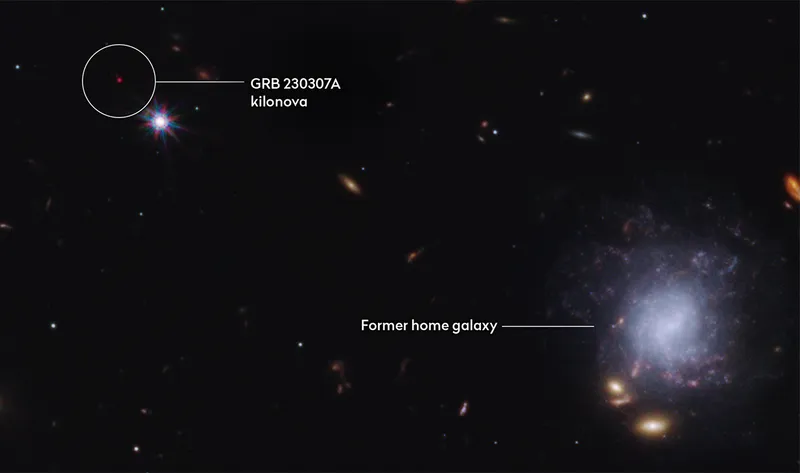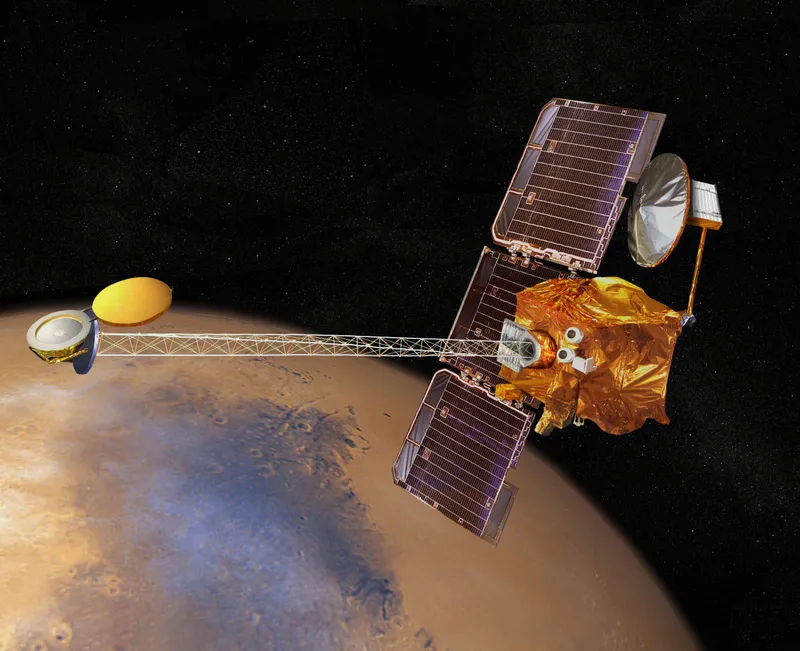When two dead stars were hurled from their host galaxy, it resulted in one of the biggest stellar collisions ever seen.
After first being spotted in March 2023, follow-up observations have now revealed that the event was a kilonova, leading to the creation of some of the rarest elements in the Universe.
The explosion, now known as GRB 230307A, was first observed as a flurry of gamma rays by the Fermi Gamma-ray Burst Monitor.
It was the second-most powerful burst ever recorded, roughly 1,000 times brighter than most gamma-ray bursts, and lasted for a minute rather than the usual two seconds.
The world’s premier telescopes raced to observe the event, finding it originated 120,000 lightyears from the nearest galaxy, suggesting the stars responsible had been hurled from their original home.

Kilonovae explained
Explosion GRB 230307A followed the tell-tale signature of a kilonova.
Kilonovae occur when a neutron star – a stellar remnant, with the mass of the Sun packed into a space the size of a city – collides with another neutron star or a black hole.
"They rapidly expand and cool, with the peak of their light quickly moving from the optical to the infrared," says Danny Steeghs from the University of Warwick, who took part in the study.
Observations with the James Webb Space Telescope found evidence of tellurium, an element even rarer than platinum.
While elements lighter than iron can be forged inside the heart of living stars, heavier elements such as tellurium can only be produced in the extreme conditions of such stellar explosions.
"This is an important next step in our understanding of the role binary neutron star mergers play in terms of populating the periodic table of elements," says Steeghs.
"It is 150 years since we first wrote down the periodic table," says Andrew Levan from Radboud University in the Netherlands, who led the study.
"Thanks to kilonovae and new technology, we are finally filling in the last blanks about where everything was made."
Observing the burst from Mars

The initial detection of GRB 230307A came from instruments that monitor the whole sky, but pinning down the burst’s precise position meant combining observations from many telescopes.
In this case, crucial help came from an unlikely source.
Mars Odyssey, which reached the Red Planet in 2001, has a gamma-ray detector on board, designed to search for elements like carbon in Mars’s atmosphere.
It also happens to pick up bright bursts of gamma rays from much further afield – and it spotted GRB 230307A.
That means that what we know about the most violent events in the cosmos depends on an ageing Martian spacecraft – a pretty nice example of interplanetary collaboration.

